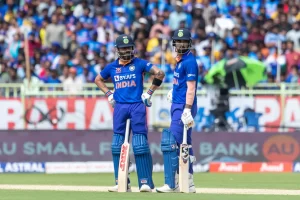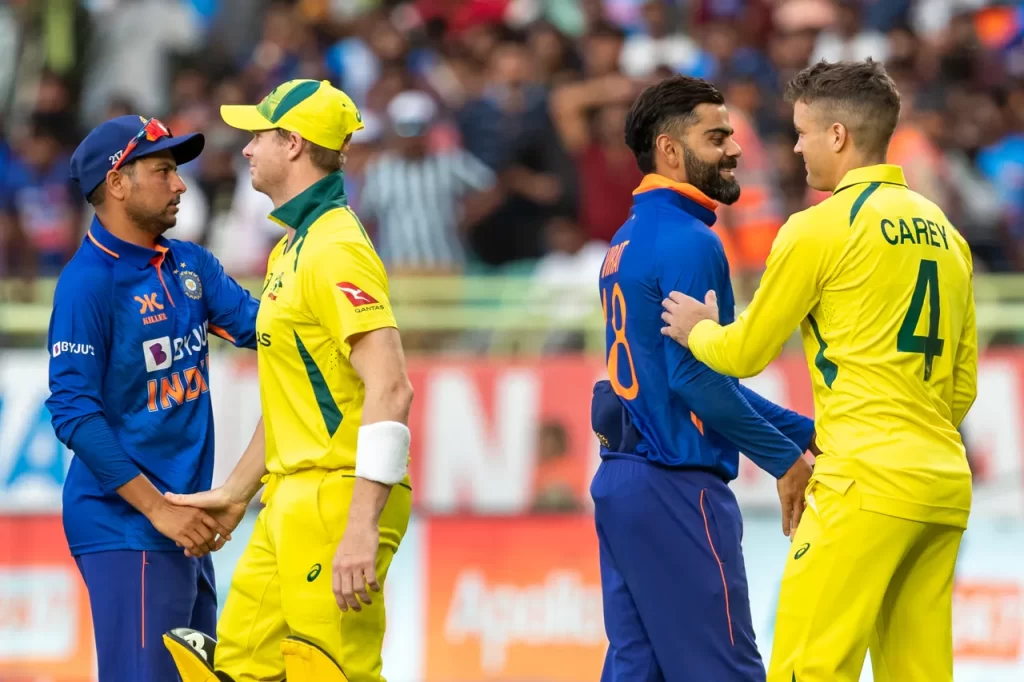
A bad beating before the World Cup is no bad thing, especially if it emphasises that you cannot afford to let standards slip. It also forces you to look again at the personnel at your disposal.
With the leading players now playing three formats, in addition to tournaments like the Indian Premier League (IPL), the time between major competitions has to be carefully managed. When a player is just starting out or when they’re coming towards the end of their careers, team managements are acutely conscious of the workloads they take on. The time after a major event is also seen as the perfect opportunity for the rebuilding or evolution of teams.
For well over a decade now, India have used the four-yearly World Cup cycle this way. Even if the final outcome wasn’t as desired, processes were put in place that eventually helped the team move forward. Rahul Dravid’s tenure as ODI captain, with Greg Chappell as the coach, is remembered for a disastrous first-round exit from the World Cup in the Caribbean in 2007. But the same side, recognising a glaring weakness, had pulled off 17 consecutive run chases in 2005-06. Players who were part of it have spoken of how much it benefited them later.
There is far less emphasis on the 50-overs format now, as evidenced by the lack of matches that the leading stars play between World Cups. Regardless, teams still build towards the marquee competition. In the first or second year of the cycle, new faces that can add to the team’s potency are identified. They then usually get a good run in the team. in the final phase, with less than a year to go for the World Cup, teams assess whether the relatively new faces have what it takes, or whether they need to go back to established names still in the mix. In rare cases, as with R Ashwin in 2010, you can also have an exciting new addition forcing his way into the plans.
India are in that final phase right now. A dozen games – if the blighted Asia Cup even goes ahead as planned – remains before the first World Cup to be exclusively hosted by India begins. As of now, only four of those matches, the upcoming series decider against Australia in Chennai, and another three-game series against them in September, are scheduled to be held in India.
In that context, the drubbing in Visakhapatnam was undoubtedly a setback. In terms of balls bowled in an ODI in India, only New Zealand’s thrashing of Kenya during the 2011 World Cup was shorter. If it had been in a tournament like the World Cup, it’s the sort of defeat that would push your net run-rate into an abyss you couldn’t climb out of.
Is there a silver lining? Most teams will tell you that they would rather suffer such a blow-out in the run-up to the tournament than within it. it’s well-documented that England overcame a miserable mid-competition run to roar their way to the title in 2019. But that’s the exception. In most cases, if you experience a slump within a tournament, it’s usually curtains for the campaign.
India played a whopping 118 ODIs after the Trinidad debacle of 2007, building up towards the 2011 competition. And though they won 69 of those games, it wasn’t always smooth sailing. In a tri-series held in Dambulla in central Sri Lanka just six months before the start of the World Cup, they were first bowled out for 88 by New Zealand, chasing 289 for victory. Less than a fortnight later, a Sri Lankan attack of Lasith Malinga, Nuwan Kulasekara, Angelo Mathews and Thisara Perera skittled India for 103 in just 33.4 overs.
The Lankans needed just 92 balls to chase down the target. It should be noted that Sachin Tendulkar, Gautam Gambhir, Virat Kohli, Harbhajan Singh and Zaheer Khan, all key players in the World Cup triumph the following April, didn’t play, but it was still a formidable Indian side, boasting names like MS Dhoni, Virender Sehwag, Yuvraj Singh, Suresh Raina and Ashish Nehra. Rohit Sharma, the present-day captain, and Ravindra Jadeja, were also in the XI.
India lost the final to Sri Lanka as well, but though the World Cup itself wasn’t without worries – a batting collapse and loss to South Africa in Nagpur, and a tie against England while defending a huge score of 338 – the ultimate goal of ending 28 years of hurt was realised. Between the 2007 and 2011 World Cups, India were bowled out for under 200 when batting first on nine occasions. Only one of those games was won. Seven were lost.

This team plays far less ODI cricket, but is also much less prone to collapses. The Visakhapatnam embarrassment marked only the third time (in 53 matches) that India had been knocked over inside 50 overs since the 2019 World Cup. It’s a measure of both the team’s batting strength and the tendency to prepare pitches that suit batsmen.
Talk to coaches and experienced players, and they’ll tell you that these kind of thrashings can offer great lessons. It’s a reminder that you have to be on the ball constantly, especially when up against the strongest sides. Even the slightest dip in your own standards, and bowlers as skilled as Mitchell Starc will destroy you.
It also forces the team management to ask questions of individual personnel. Rohit has already reposed faith in Suryakumar Yadav, but there’s no question that the new star of the T20 side is finding the transition to 50 overs an ordeal. In the last 12 months, SKY has crossed 30 just twice in 13 ODI innings. There hasn’t been a single half-century. A second successive first-ball duck also marked his seventh dismissal inside ten balls during that phase. Considering that six of those innings have come at No.5 and five at No.4, both pivotal positions in the order, there are no excuses such as lack of time to play himself in.
When Shreyas Iyer is fit, SKY would be relegated to the bench anyway. With six months to go for the big event though, Rohit, Dravid and other decision-makers need to ask themselves if there are better reserve options. The same goes for the spin attack as well. If Yuzvendra Chahal is no longer in favour, why not try another wrist spinner? Can a team win a major competition in Asia without a skilled leggie in their ranks?
When a team wins, such questions routinely get brushed under the carpet. Defeat allows an airing of important issues. Even the greatest of teams needs such wake-up calls. Back in 2007, a month out from their defence of the title, Australia went to New Zealand and were bowled out for 148 in Wellington, with Shane Bond taking 5 for 23. New Zealand romped home without losing a wicket.
But the World Cup itself, with Ricky Ponting, Adam Gilchrist and Andrew Symonds back in the XI, was a different story. Australia, with Shaun Tait adding some wild unpredictability to the pace ranks, went through the tournament undefeated, just as they had in 2003. The losses in New Zealand smarted, but the lessons learned from them helped the champions when it mattered most.
India and Rohit will hope to show in Chennai that similar lessons have been absorbed from 37 very forgettable overs.




